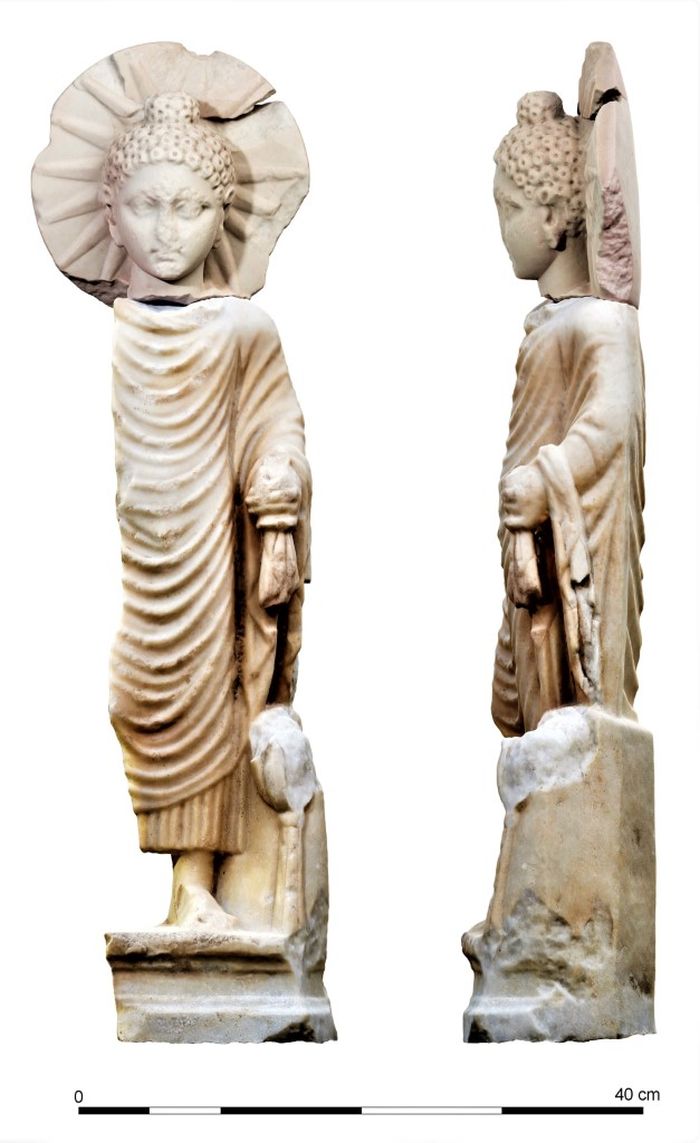
A statue of Buddha, discovered by a Polish-American archaeological expedition in Berenike on the Red Sea, is among the 10 most exciting discoveries of 2023. The Polish Centre of Mediterranean Archaeology at the University of Warsaw informed about the list published by the American Society of Overseas Research.
Berenike is the most important of Roman ports on Egypt's Red Sea coast. It was part of a trade route used for transporting goods from distant regions of the ancient world - including India - to the Roman Empire.
The discovery of the Buddha statue was made by a team led by Rodney Ast of Heidelberg University conducting research at the temple of Isis. The statue, made of Anatolian marble, was found in the courtyard of the city's main temple.
The 71 cm high statue depicts Buddha standing and holding part of his robe in his left hand. Around his head there is a disk with the rays of the sun. There is a lotus flower next to it.
'The find, made public in April 2023, received tremendous attention from the media and the general public; it even received its own Wikipedia page,’ the Polish Centre of Mediterranean Archaeology UW says in a press release.

'This is a unique discovery in the entire ancient Mediterranean world. Neither in Egypt nor in other parts of the Roman Empire has a sculpture of Buddha ever been found,’ Dr. Mariusz Gwiazda from the Polish Centre of Mediterranean Archaeology, University UW said in April. Dr. Gwiazda supervises research at Berenike together with Professor Steven Sidebotham from the University of Delaware in the USA.
The Buddha statue is not only the most prominent of a number of finds confirming the intense contacts between Berenike and India; it is also evidence of the presence of Buddhism in the Mediterranean world, the researchers believe.
In addition to the statue, pieces of other representations with Indian iconography carved from local gypsum were also identified at Berenike, along with an inscription in Sanskrit and Indian coins.
ASOR's list of the 10 most exciting discoveries of 2023 includes those deemed to have pushed the limits of the discipline and provide new insights into the ancient world. The full list is available on the website.
The American Society of Overseas Research (ASOR) is an American scientific society founded in 1900. It publishes several major archaeological journals on Near Eastern archaeology, supports excavations and other research projects, and organizes leading international scientific conferences in this field. (PAP)
PAP - Science in Poland
ekr/ bar/ kap/
tr. RL


